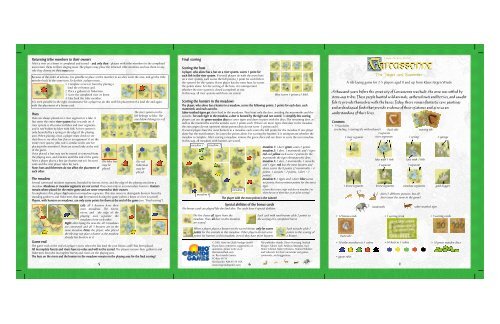


If the bonus roll results in a 6 again, the player earns again an additional bonus roll.

If the player cannot draw a token from home, rolling a 6 earns the player an additional or "bonus" roll in that turn. Passes are not allowed if no move is possible, the turn moves to the next player. If an opponent's token is blocking your pathway, you will need to land on the same space as the token to capture it. Once a player has one or more tokens in play, he selects a token and moves it forwards along the track the number of squares indicated by the die. Players must always move a token according to the die value rolled. If the player has no tokens yet in play and rolls other than a 6, the turn passes to the next player. The start box has 2 own tokens (is doubled). The player can draw a token from home every time he gets a 6 unless home is empty or move a piece 6 times. To enter a token into play from its yard to its starting square, a player must roll a 6. Players alternate turns in a clockwise direction. The others often continue to play to determine second-, third-, and fourth-place finishers.Įach player rolls a die the highest roller begins the game. The first to bring all their tokens to the finish wins the game. The rolls of a single die control the swiftness of the tokens, and entry to the finishing square requires a precise roll from the player. When reaching the square below his home column, a player continues by moving tokens up the column to the finishing square. When able to, the players will enter their tokens one per turn on their respective starting squares, and proceed to race them clockwise around the board along the game track (the path of squares not part of any player's home column). At the beginning of the game, each player's four tokens are out of play and staged in the player's yard (one of the large corner areas of the board in the player's colour). Two, three, or four can play, without partnerships. Trajectory of tokens of each colour on the original Ludo board The Royal Navy took Ludo and converted it into the board game Uckers. Pachisi was modified to use a cubic die with dice cup and patented as "Ludo" in England in 1896. The contemporary version was played by the Mughal emperors of India a notable example is Akbar. It was also known as Chaupar in ancient times. However, the Pandavas get all their belongings back after Draupadi vows to curse the whole Kuru lineage but stops at the intervention of Gandhari and seeing an opportunity to vent Draupadi's anger, Kuru king Dhritarashtra promises to give back the Pandavas, all that they had lost in the game. The original version is also described in Indian epic Mahabharata in which Shakuni uses the cursed dice to beat the Pandavas and at last after losing everything, Yudhisthira puts his wife Draupadi on stake and loses her too. The earliest evidence of this game's evolution in India is the depiction of boards on the caves of Ellora. Pachisi was created in India in the 6th century.


 0 kommentar(er)
0 kommentar(er)
